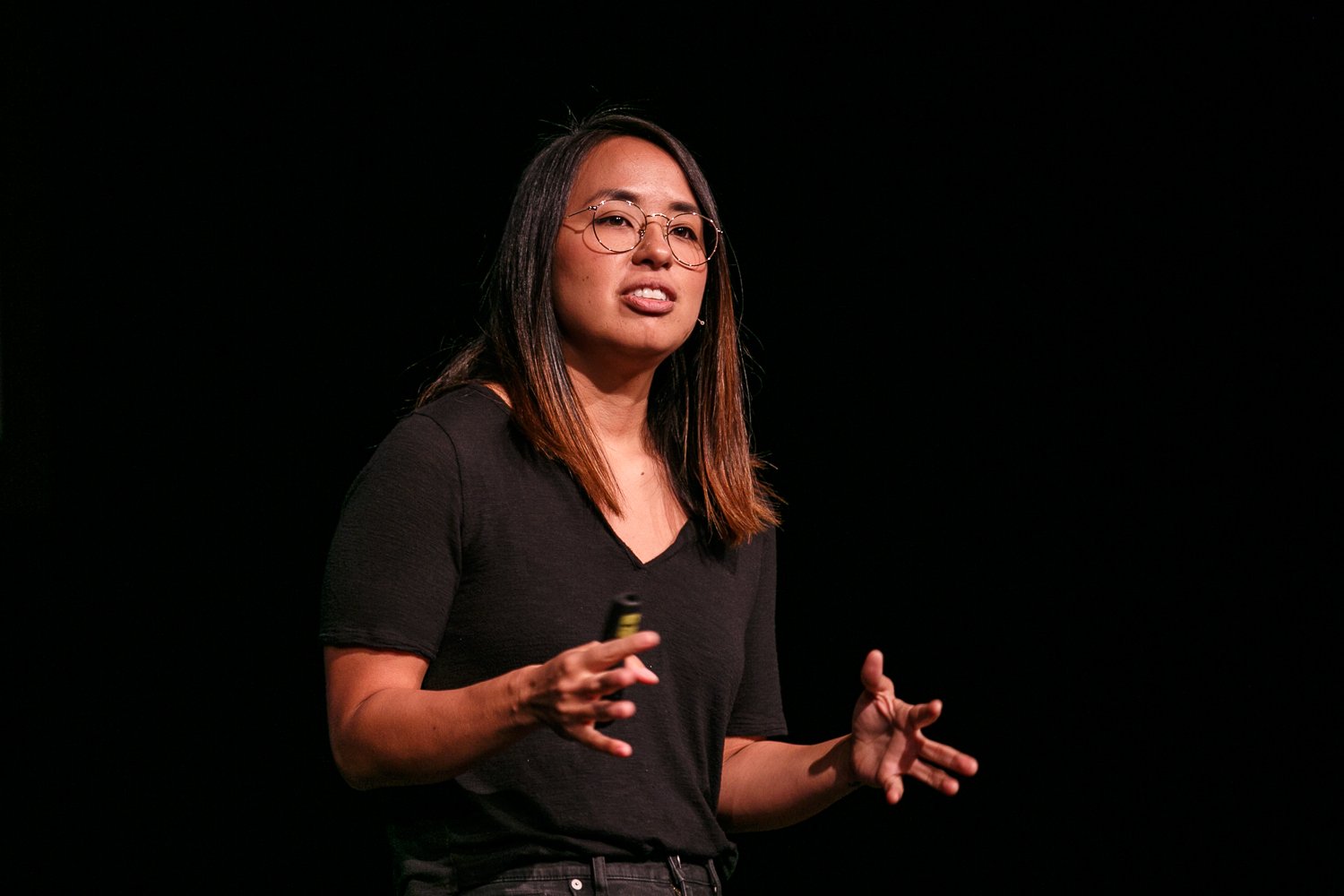A BuzzFeed Producer Revealed The Company’s Secrets To Going Viral

What’s the secret to creating viral content that actually matters? That’s the question BuzzFeed’s Ashly Perez set out to answer on day two of Video Junkee, at Carriageworks in Sydney on Saturday.
Perez, BuzzFeed’s Director of Development, which means she’s responsible for much of the company’s mega-viral scripted video content, was hosting her own event at the event. And she knows a thing or two about how to go viral.
Perez first scored a gig at the news and entertainment company, when a “community post” she created for fun in 2013, titled “What It’s Like To Be A Twentysomething, As Told By ‘Mean Girls’, ‘Bridesmaids’ And ‘Girls’”, became the company’s most viral post ever.
At the time, Perez was working as an English teacher in South Korea. She said BuzzFeed’s number crunchers couldn’t understand why so much traffic was coming from South Korea (“they thought a bomb had gone off or something”).
Soon after, Perez moved to New York to take up a full time gig at BuzzFeed, and quickly created another piece of viral content — this time a heartfelt story about struggling to live up to South Korean beauty standards.
Another of Perez’s viral hits, the “big kahuna” as she called it, was a quiz that told readers which US city they should live in. It picked up more than 22 million viral views in three days, proving Perez had a knack for creating viral content.
Since then she’s had seven different job titles in four years (“It’s very millennial”) and moved to LA to head up BuzzFeed’s scripted video output.
Perez was the keynote speaker on day 2 at Video Junkee, where she let the rapt audience in on BuzzFeed’s secret to viral success.

The main point is authenticity.
“Hire diversely, write authentically”, Perez says. Like all of BuzzFeed’s content, the company’s video output always seeks to tap into an aspect of the reader’s identity, be it race, sexuality, hair colour or a love of Harry Potter books.
The company’s success rests on the fact that it hires people who live and breathe these identities themselves. The result is a catalogue of quizzes, lists, stories and videos that reflect the reader back to themselves, and often have a profound impact.
Perez told the audience that she always asks herself. Four questions before producing a video:
“So What?”
Who is this piece of content for? Why are you making it here and now? What purpose does it serve? If you can’t answer these questions, Perez says, thing back to the drawing board.
“Who Is It For?”
One of Perez’s secrets rests in not trying to create a story that is for everyone. Perez is a Cuban/Filipino/Korean/American lesbian — and she tells her own stories through her videos. Not everyone will identify with her story, but for those who do, it’s powerful enough that they might feel compelled to share it. Next thing you know, you have a viral hit.
Inspiring presentation by @itsashlyperez on why audience actually matters. #VideoJunkee2017 pic.twitter.com/ho5yF4ued7
— Dean Nye (@Dean_Nye) July 29, 2017
“How Will They Use It?”
Virality comes from a person’s decision to share content with their family and friends. Perez says the decision to share is a powerful choice by a person, because they’re making a statement about who they are.
When a person shares, they’re saying, “I identify with this content, and I want my friends and family to know that.”
“Do They Feel Less Alone?”
The best comment Perez can see on a video she’s created is someone saying, “I thought I was the only one”, because it means she’s given the reader a sense of belonging and identity they didn’t feel before.
If you can answer these four questions, Perez says, then you’re ready to start producing, and that can start the ball rolling on a whole field of viral content.
Perez said every piece of content the company produces informs its next decision. Did the video about Latino men imitating their mothers go viral? Maybe we could try the same with another identity? Maybe we should try more latino content? Maybe people just love their mums.
The final piece of advice Perez offers is a simple one: There’s no point in doing things by half measures in an age where media organisations are all competing for the reader’s attention, second by second.
Perez told the crowd at Carriageworks that you have to be willing to take risks if you want to reach a large, global audience and have an impact.
“Go big or fail big”
You can read more about Video Junkee here.